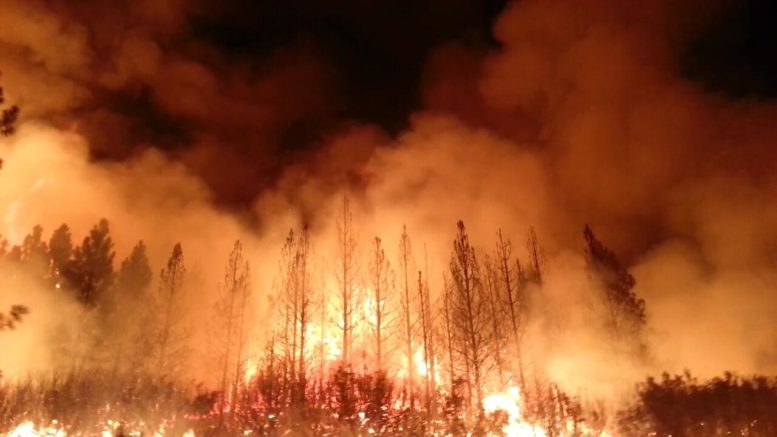With the devastating Australian wildfire season of 2020 and the California wildfires over the past few years, we understand that the issue of wildfires are not contained to the Pacific Northwest. We just would just like to add some insight into the issue about how it affects astronomy. Wildfires affect the entire planet and just want to contribute some insight for those interested.
Wildfires seem to become the norm for the some areas of the world including the American West and Pacific Northwest. This is very ominous sign as the affects of wildfires have a major impact on the health of nearby communities and health of the environment as a whole. Moreover, whenever there are major wildfires, astronomical observations and outdoor activities are often impacted as environmental conditions are poor. In this article, we will be taking a look at the impact of wildfires have on astronomy and talk a little about what has caused this rise in wildfires.
Some of the reasons that the American West and other areas have seen an increasingly worsening wildfire season is the increase mismanagement of the forest and numerous reasons for the fires to start. With the number of ways that fires that can start, both from human and nature, mismanagement by humanity can cause issues and cause fires to spread faster than expected. With fewer amounts of smaller fires, the forest floor builds up with more fuel to burn when it goes up.
The affects of the increased wildfires on the environment includes, but not limited to destroying soil quality, destroying trees, killing trees, and sending health issues because of the smoke sent into the atmosphere.
Although visual astronomy for amateurs and observatories will be impaired and very limited during times of fire, not all types of astronomy would be affected. Electronically assisted astronomy might still be able to be performed as this form of astronomy bypass some of the issues with the clouds and optical issues they cause. Moreover, satellite astronomy in some aspects would not affected by the affects, but this depends on the location of the satellite orbit. Plus, there is a huge risk to peoples health when they spend time outside in these conditions!
Other than the smoke, the risks posed to observatories and remote observing sites including the potential of burning down, creating additional light pollution, and causing logistical problems for employees who work at areas surrounded by forests. If observatories are in a danger zone, they could completely burn down, but even if these observatories remain, the fires can still cause light pollution issues. Even if the smoke does blow in the opposite directions and the fire is hundreds of miles away, these fires can still cause issues with employee logistics. If the employees are cut off because of the fire, there would be some logistical issues for either providing food or transport out. However, it is worth noting that these are just potentials for the Pacific Northwest as issues such as these have been issues with facilities in Tucson.
There are opportunities to use space resources to track how these fire develop and for mapping the fire opportunities. There are examples for growth including a venture that “Planet, Salo Sciences, and Vibrant Planet announc[ed] a partnership to develop the California Forest Observatory (CFO)—a new platform that will dynamically map forest structure and fuel loads down to the tree level, statewide.”[1]
This means that until a solution is found to contain these wildfires, they will continue to be a regular occurrence. This can be seen in the manifestations of the 2018 Pacific Northwest wildfire season being a year which saw many devastating wildfires in the area, whereas 2019 was a relatively milder wildfires season. There will be ups and downs for how bad the seasons are, but that does not mitigate the risks, nor downplay the issue. Rather it just means that the conditions for one year were not right for wildfires and communities could take the time to help perform actions to help maintain the forests to help mitigate or prevent future fires.
These wildfires can definitely cause issues for professional astronomers and amateurs alike by hampering collection. Until there are ways to limit this, the risks will always be there.
References And Further Reading
[1]=https://www.planet.com/pulse/monitoring-wildfire-risk-using-space-and-ai/
https://www.esrl.noaa.gov/csd/factsheets/csdWildfiresFIREX.pdf

Be the first to comment on "WildFires: The Risk Posed To Astronomy"